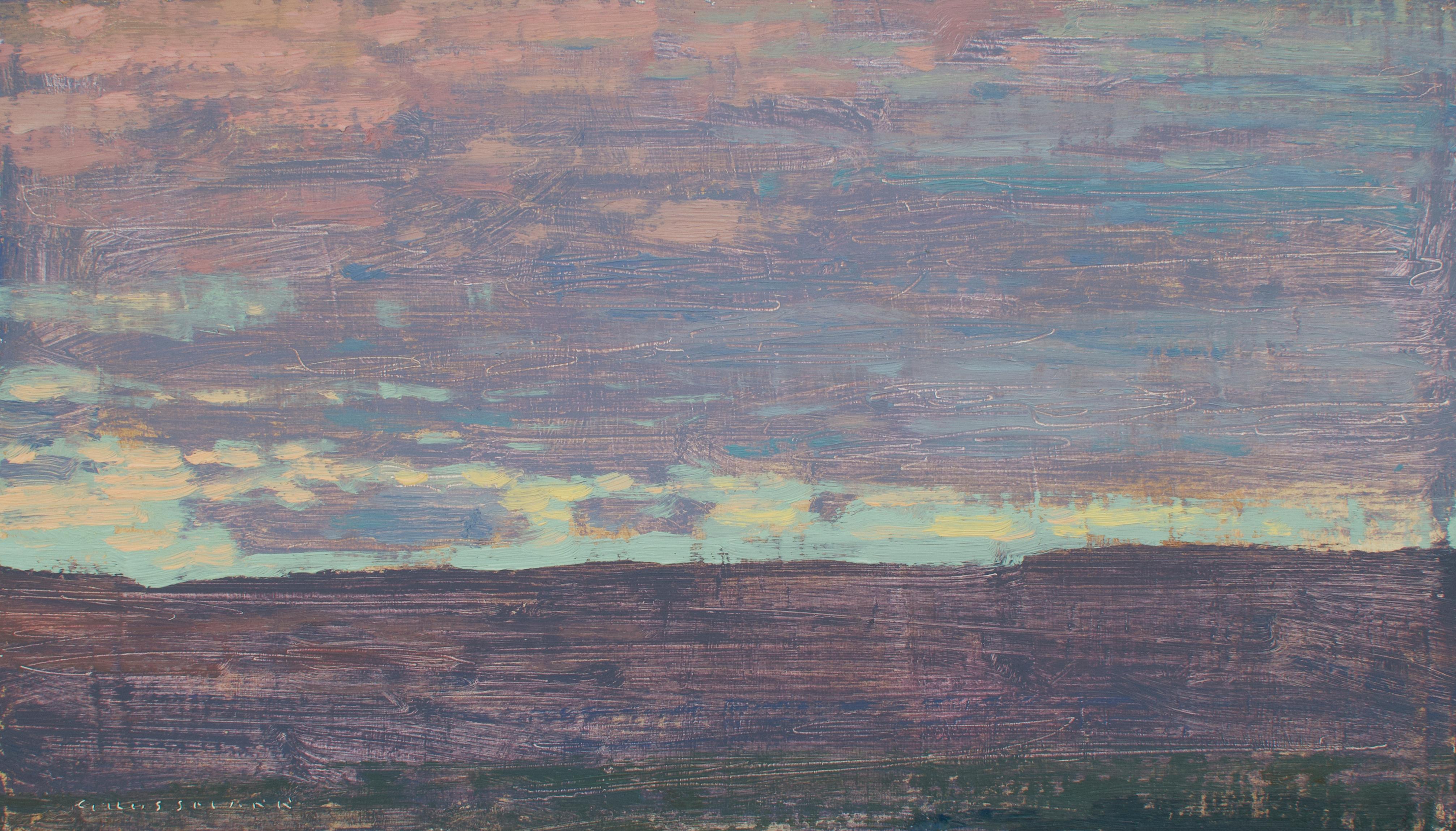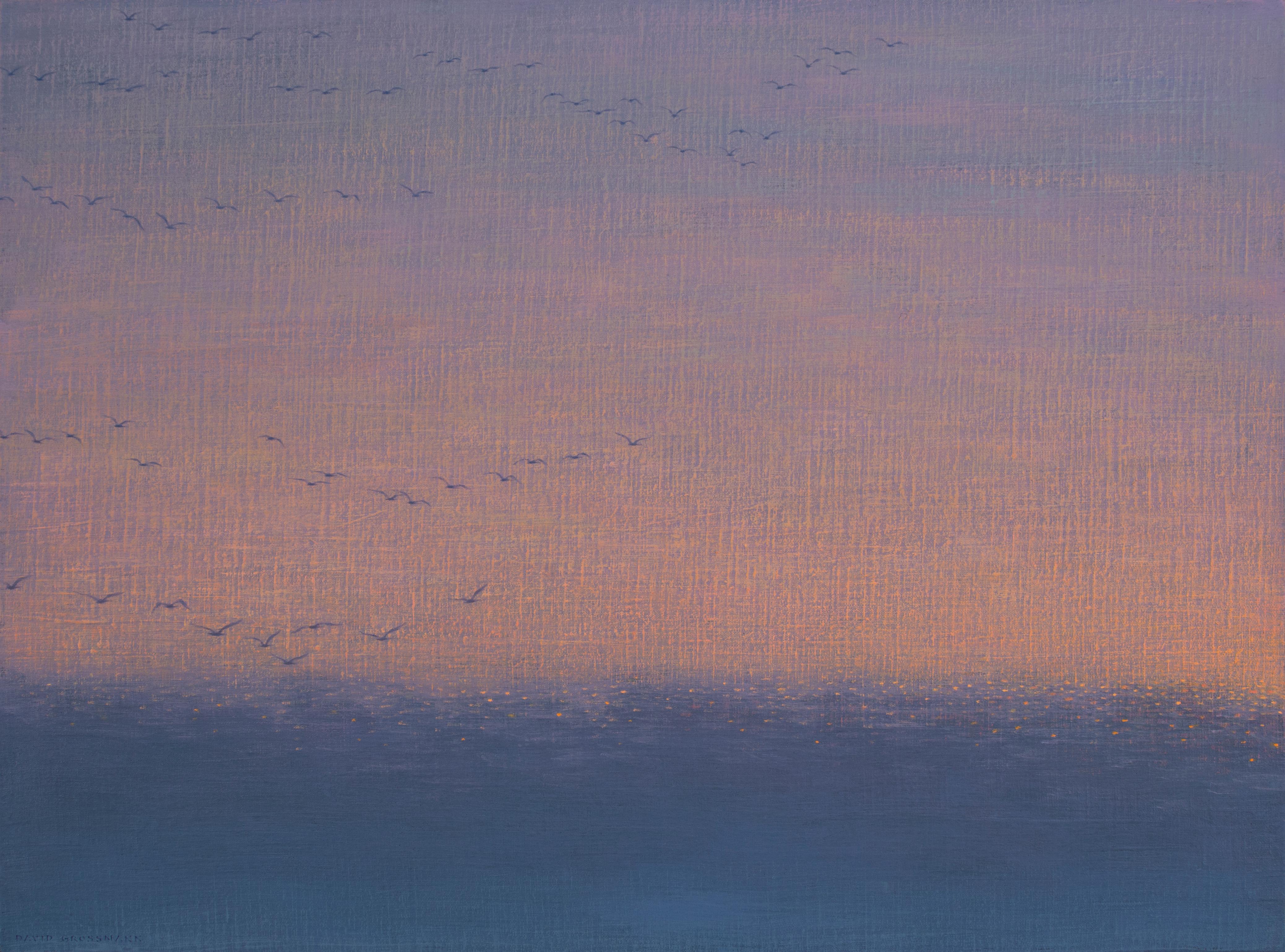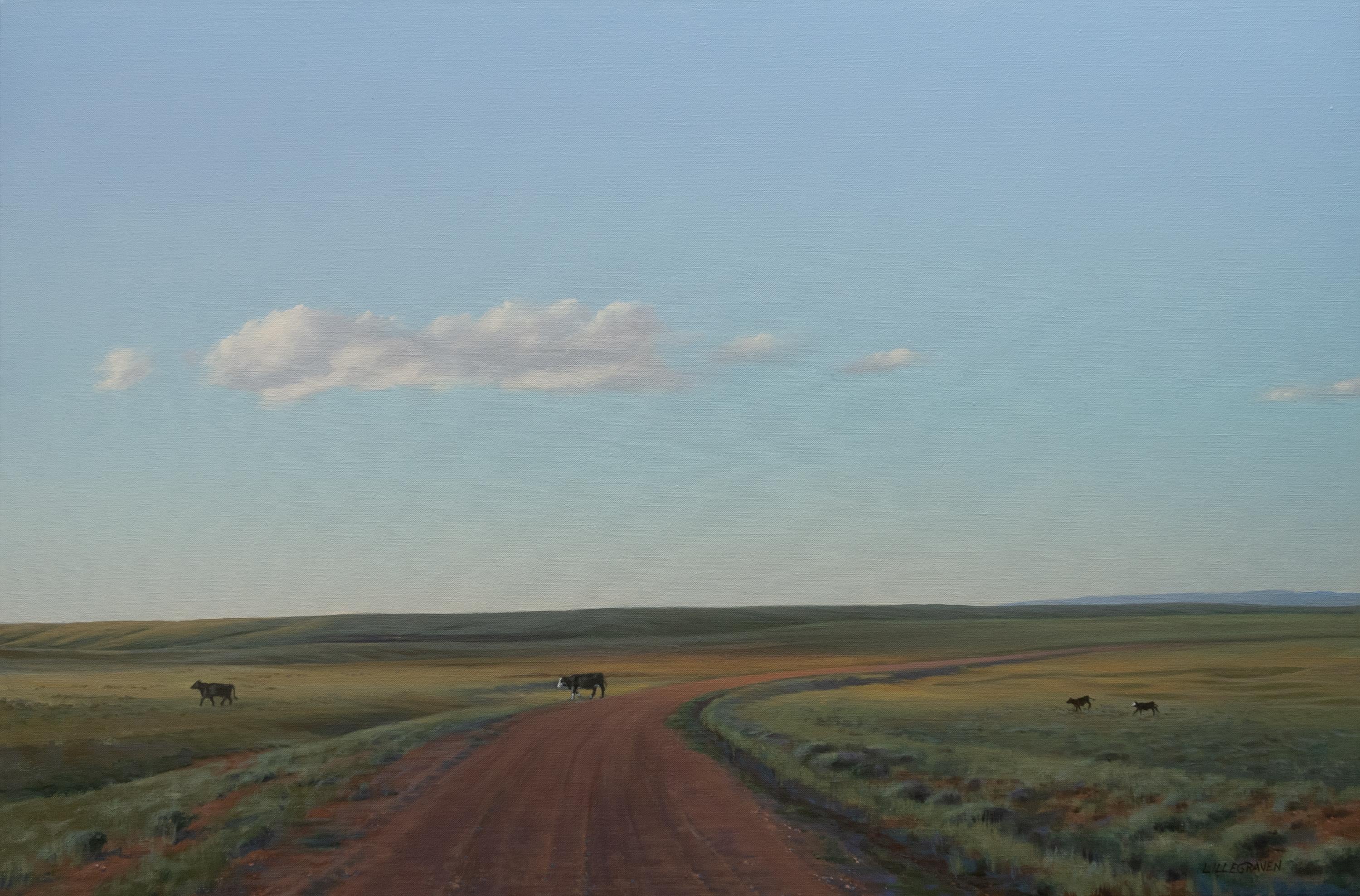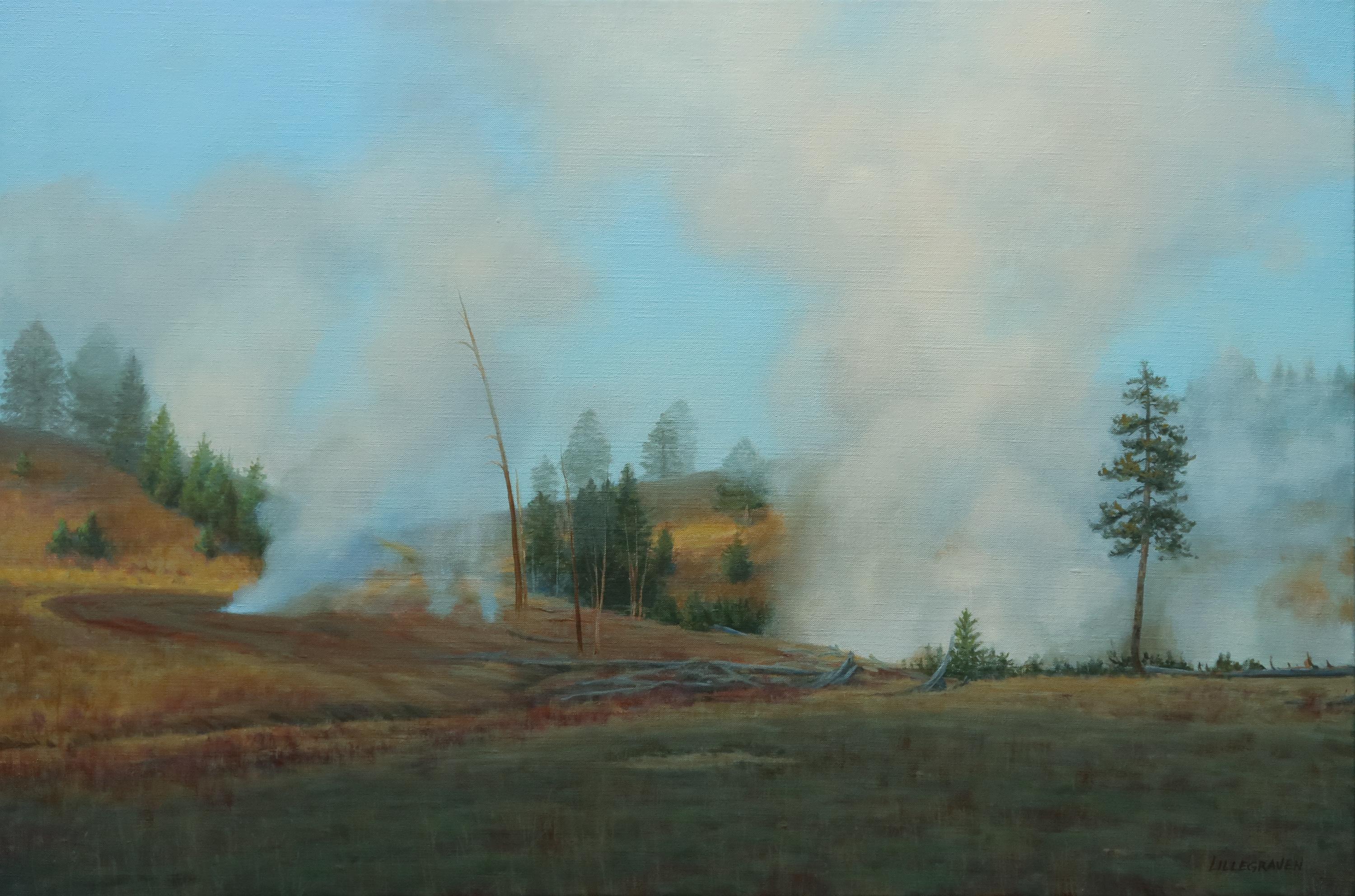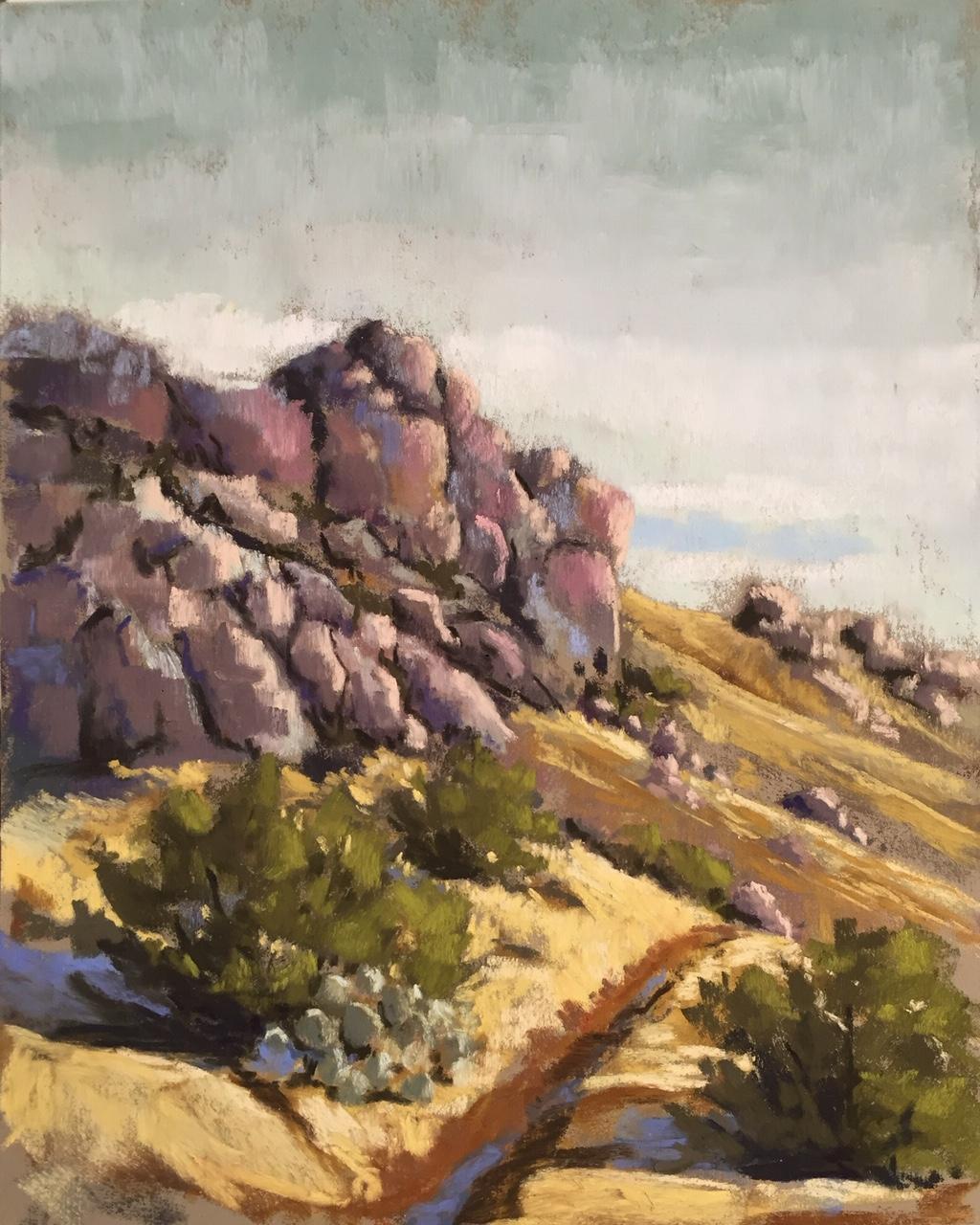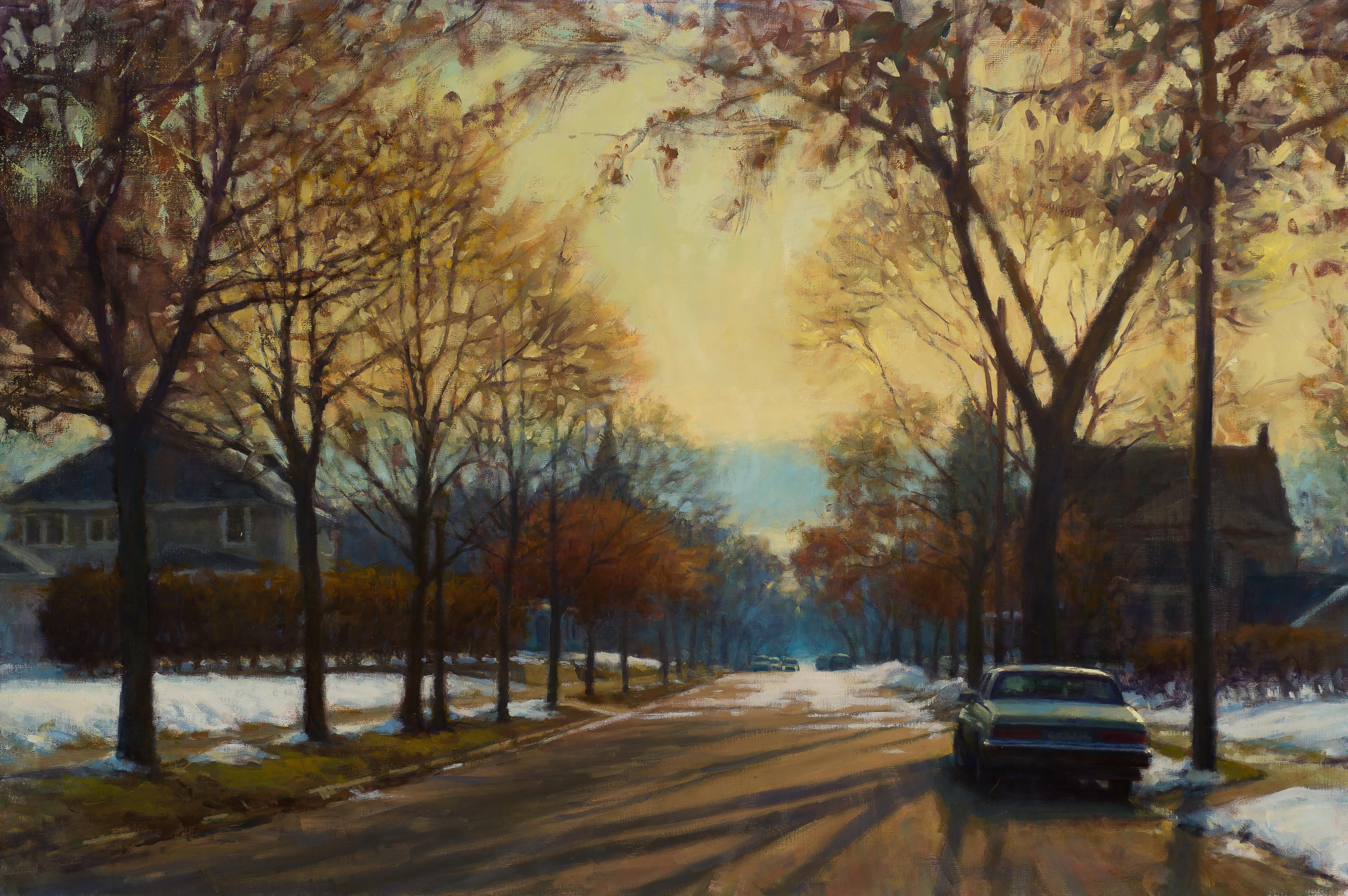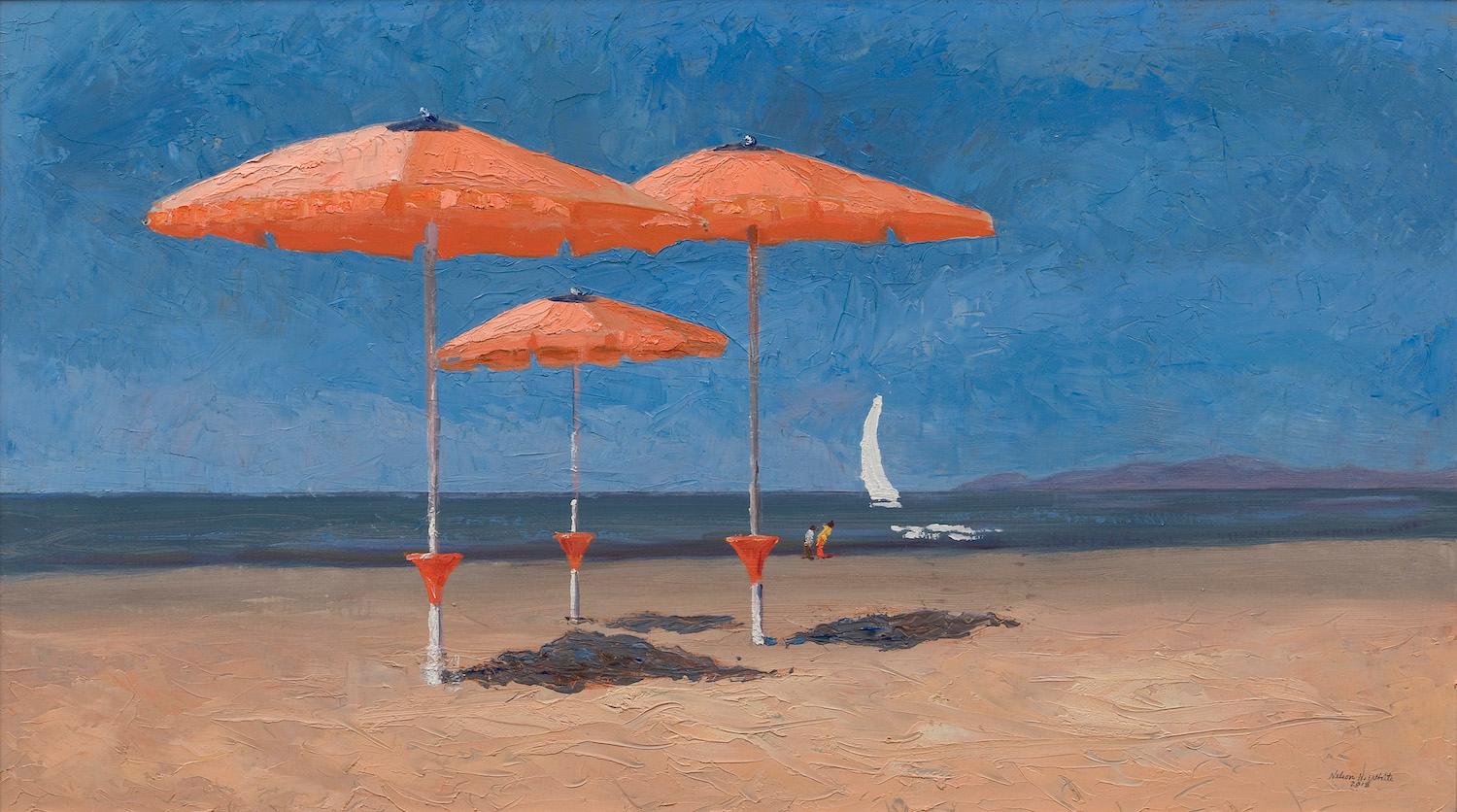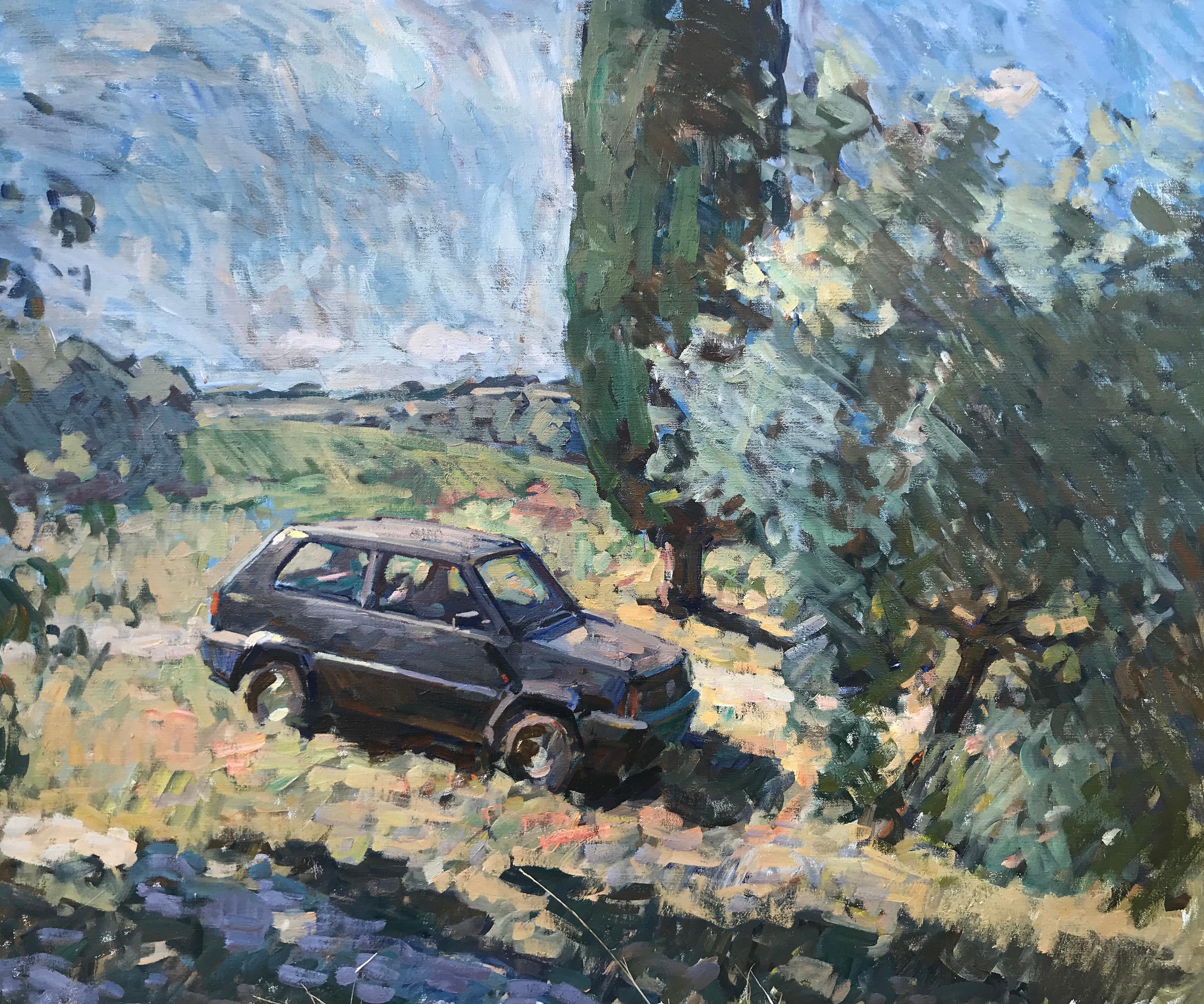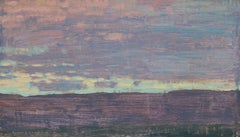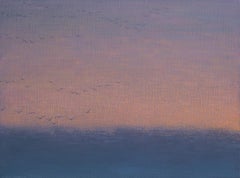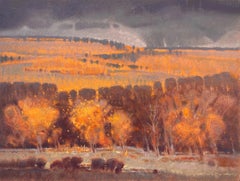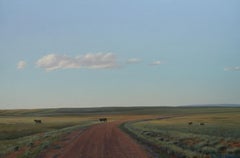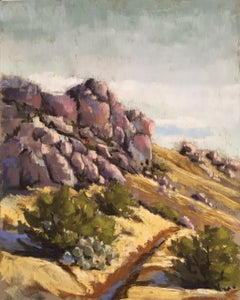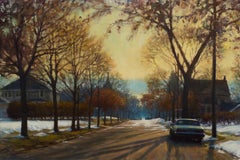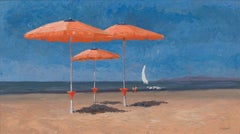
"Snow Shapes and Pine Trees Beside Mesa Creek", Oil Painting
View Similar Items
Want more images or videos?
Request additional images or videos from the seller
1 of 2
David Grossmann"Snow Shapes and Pine Trees Beside Mesa Creek", Oil Painting2021
2021
Price:$1,750
$2,100List Price
About the Item
- Creator:David Grossmann (1984)
- Creation Year:2021
- Dimensions:Height: 7 in (17.78 cm)Width: 12 in (30.48 cm)
- Medium:
- Movement & Style:
- Period:
- Condition:
- Gallery Location:Denver, CO
- Reference Number:1stDibs: LU130727733092
About the Seller
5.0
Gold Seller
Premium sellers maintaining a 4.3+ rating and 24-hour response times
Established in 2004
1stDibs seller since 2019
134 sales on 1stDibs
Typical response time: 1 hour
Authenticity Guarantee
In the unlikely event there’s an issue with an item’s authenticity, contact us within 1 year for a full refund. DetailsMoney-Back Guarantee
If your item is not as described, is damaged in transit, or does not arrive, contact us within 7 days for a full refund. Details24-Hour Cancellation
You have a 24-hour grace period in which to reconsider your purchase, with no questions asked.Vetted Professional Sellers
Our world-class sellers must adhere to strict standards for service and quality, maintaining the integrity of our listings.Price-Match Guarantee
If you find that a seller listed the same item for a lower price elsewhere, we’ll match it.Trusted Global Delivery
Our best-in-class carrier network provides specialized shipping options worldwide, including custom delivery.More From This Seller
View All"Evening View to the South West" , Oil Painting
By David Grossmann
Located in Denver, CO
David Grossman's (US based) "Evening View to the South West" is an original, handmade oil painting that depicts a wide open plain of the West with fields of...
Category
2010s American Impressionist Landscape Paintings
Materials
Linen, Oil, Panel
"Into Fading Sky", by David Grossmann, Original Oil Painting, Sunset
By David Grossmann
Located in Denver, CO
David Grossman's (US based) "Into Fading Sky" is an original, handmade oil painting that depicts a twilight sky of purple with a distant blue horizon as a flock of birds fly through ...
Category
2010s American Impressionist Landscape Paintings
Materials
Linen, Oil, Panel
"Season of Falling Leaves"
Located in Denver, CO
"Season of Falling Leaves" by Jim Morgan is an original oil painting depicting the brilliance of autumn color.
Roaming the canyons and fields around the small, central Utah town wh...
Category
2010s American Impressionist Landscape Paintings
Materials
Linen, Oil
"Cows and Calves Near Antelope Creek" (2024) By Linda Lillegraven, Oil Painting
By Linda Lillegraven
Located in Denver, CO
Linda Lillegraven's beautiful original oil landscape "Cows and Calves Near Antelope Creek" (2024) depicts a serene moment of a western plain in the afternoon, with a few cows crazing...
Category
2010s American Impressionist Landscape Paintings
Materials
Linen, Oil
"Mud Volcano Town" (2023) By Linda Lillegraven, Oil Painting
By Linda Lillegraven
Located in Denver, CO
Linda Lillegraven's beautiful original oil landscape "Mud Volcano Twon" (2024) depicts a serene moment of a western plain in the afternoon with active geysers spewing steam.
Linda L...
Category
2010s American Impressionist Landscape Paintings
Materials
Linen, Oil
"Naga Kanya" (2024), Original Oil Painting by Kevin Weckbach
By Kevin Weckbach
Located in Denver, CO
Kevin Weckbach's (US based) "Naga Kanya" is an original, hand-made oil painting that depicts a pink flowering bush.
Artist Statement:
"Subject matter to me is a vehicle for me to e...
Category
2010s American Impressionist Landscape Paintings
Materials
Oil, Panel
You May Also Like
Magdalena Afternoon
By Natasha Isenhour
Located in Denver, CO
Rocky trail and landscape
Category
2010s American Impressionist Figurative Paintings
Materials
Linen, Oil
"Remnants of Winter" oil painting, American realist tree-lined street, suburbia
By Carl Bretzke
Located in Sag Harbor, NY
Oil painting of a neighborhood in the winter. A quiet, tree-lined street is sprinkled with snow. A yellow sky blends into blue and above.
Frame dimensions: 32 x 44 inches
Artist ...
Category
2010s American Impressionist Landscape Paintings
Materials
Linen, Oil
Bagno La Salute
By Nelson White
Located in Sag Harbor, NY
Painted en plein air on the coast of Italy, in Viareggio. A beach landscape with orange umbrellas, a sailboat catches wind along the horizon. Painted with thick oil paint in the styl...
Category
21st Century and Contemporary American Impressionist Landscape Paintings
Materials
Linen, Oil
"Parked Panda" plein air painting of Fenske's Fiat in Tuscan landscape
By Ben Fenske
Located in Sag Harbor, NY
"Parked Panda" is a plein air oil painting of Fenske's Fiat in Tuscan landscape, where he lives.
Frame Dimensions 33 x 41in
Ben Fenske (b. 1978) although a native of Minnesota, a...
Category
2010s American Impressionist Landscape Paintings
Materials
Canvas, Oil, Linen
"View from the Dock on Cedar Ave" Oil painting, impressionistic seascape w boats
By Kelly Carmody
Located in Sag Harbor, NY
“View from the Dock on Cedar Ave” is a seascape by Kelly Carmody. It is an oil on linen painting. It depicts the view of sailboats in Dering Harbor, on Shelter Island, as seen from t...
Category
21st Century and Contemporary American Impressionist Figurative Paintings
Materials
Oil, Linen
"Looking For Shade" oil painting of beach-goers huddling behind lifeguard stand
By Carl Bretzke
Located in Sag Harbor, NY
Oil painting of beachgoers literally looking for shade from the sun on a beach in Laguna, California. Painted by award-winning plein air painter Carl Bretzke.
Framed in a tradition...
Category
2010s American Impressionist Landscape Paintings
Materials
Linen, Oil
